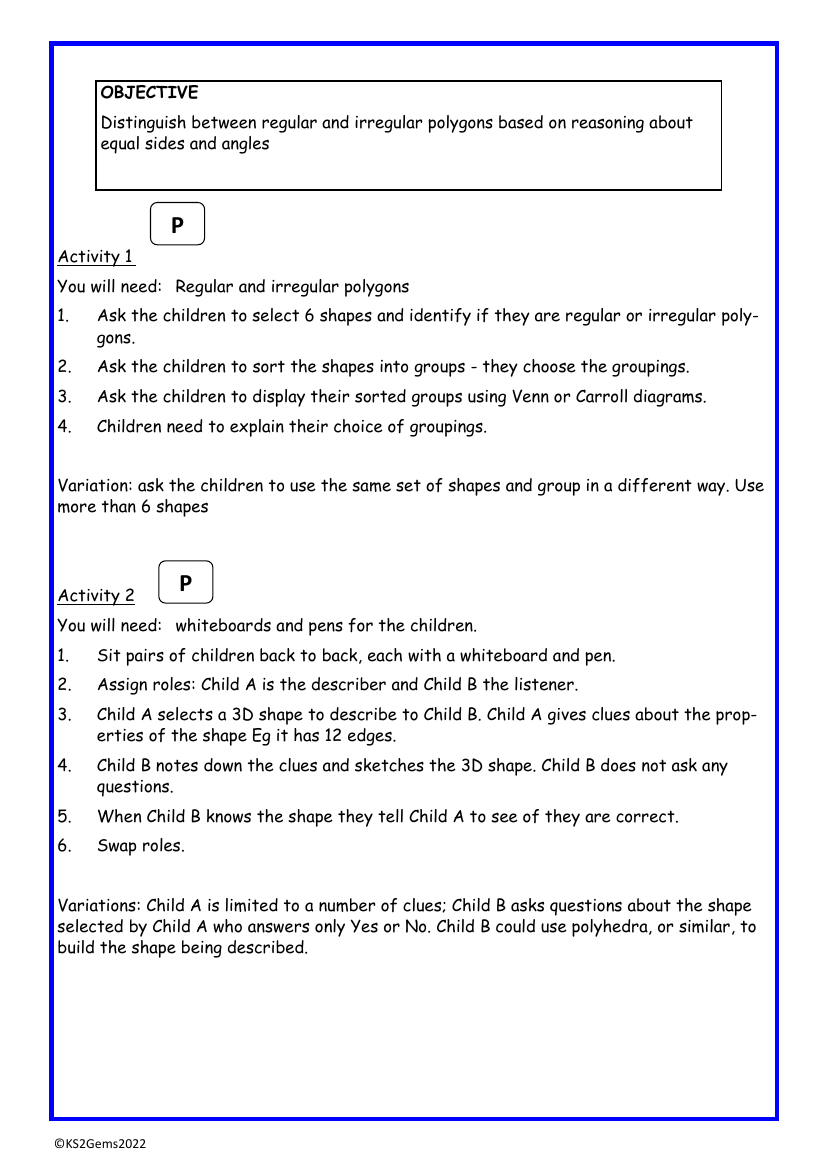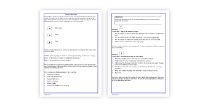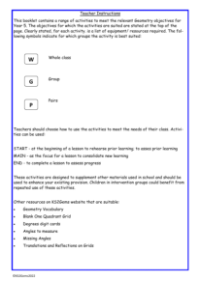Regular and irregular polygons worksheet

Maths Resource Description
In this engaging worksheet activity designed for KS2 students, the focus is on recognising and distinguishing between regular and irregular polygons. The first activity requires children to select six shapes and determine whether each one is a regular polygon, with all sides and angles equal, or an irregular polygon, where this is not the case. Once they have identified the types of polygons, the children are instructed to sort the shapes into groups based on criteria of their choosing. The children can then display their categorised shapes using Venn or Carroll diagrams, providing a visual representation of their groupings. This activity encourages children to explain their reasoning behind the classification of the shapes, enhancing their understanding of geometric properties.
Activity two introduces an interactive element where children work in pairs with one acting as the 'describer' and the other as the 'listener'. Seated back to back, the describer selects a 3D shape and provides verbal clues about its properties, such as the number of edges, without revealing its name. The listener uses these clues to note down key information and attempts to sketch the shape. This task tests the children's listening skills and their ability to visualise and draw geometric shapes based on verbal descriptions. Once the listener believes they have identified the shape, they confirm with the describer. The roles are then swapped to ensure both children have the opportunity to describe and sketch. Variations of this activity can limit the number of clues given or allow the listener to ask yes-or-no questions to aid in their guessing. The objective is to reinforce the children's ability to differentiate between regular and irregular polygons through reasoning about sides and angles.

